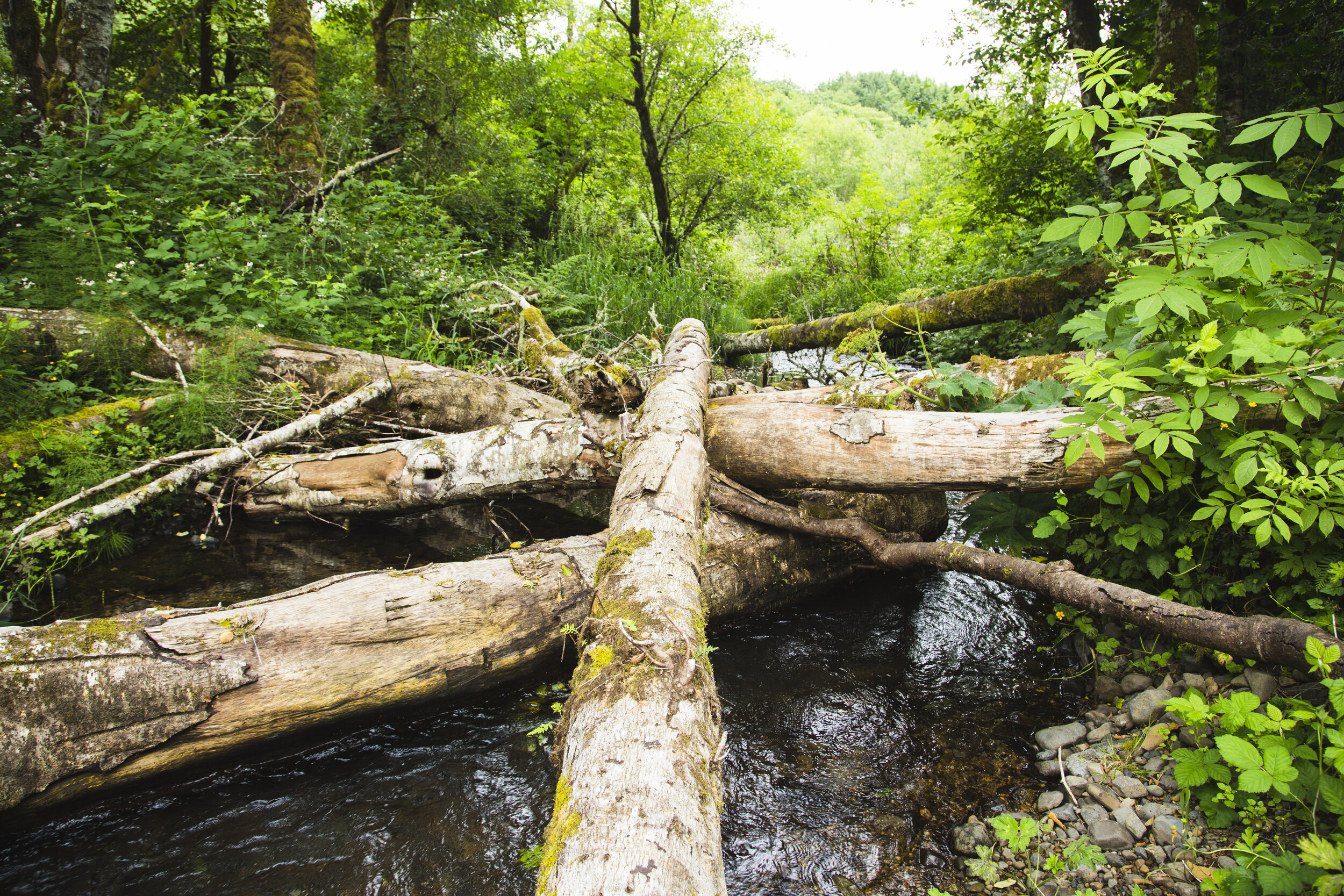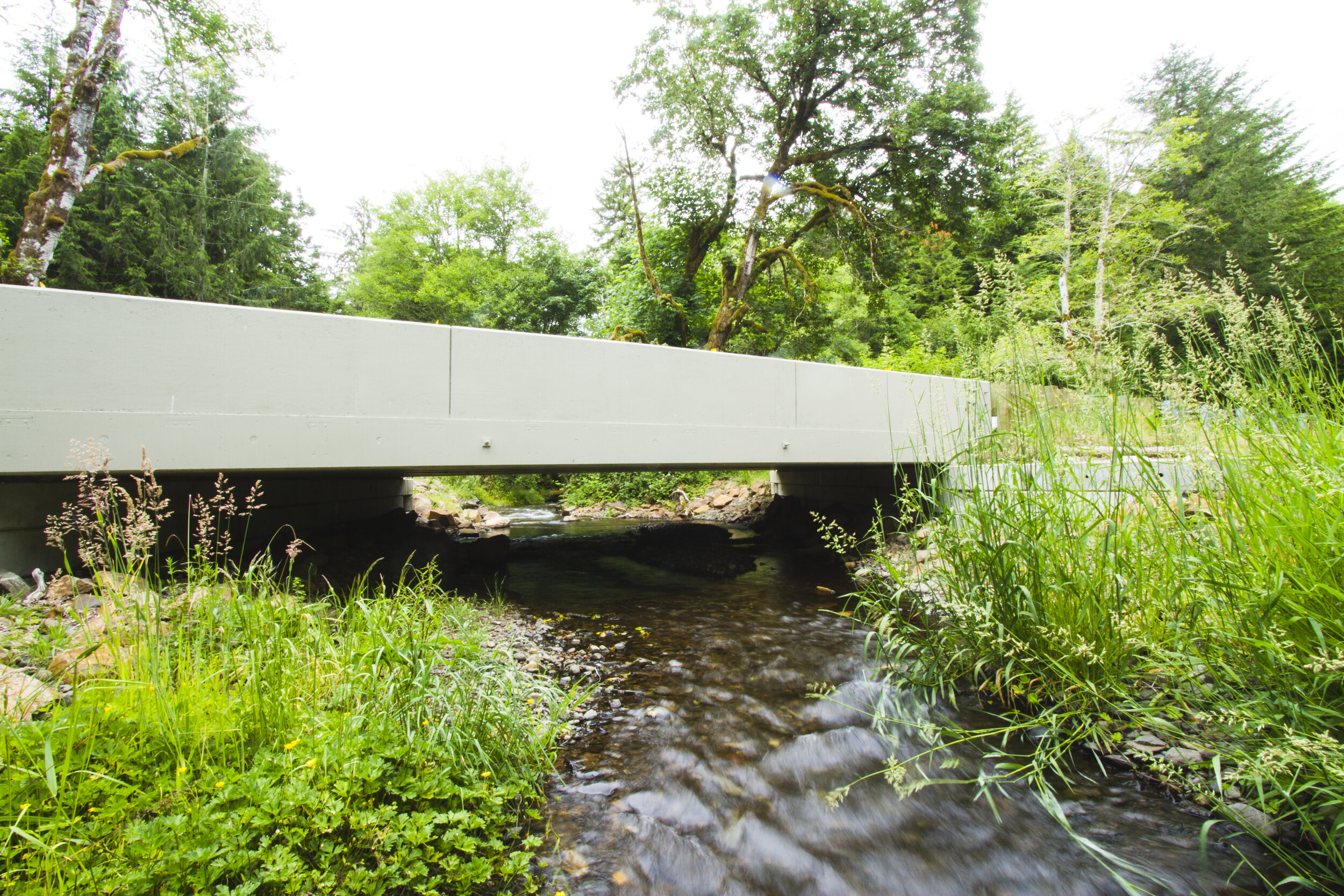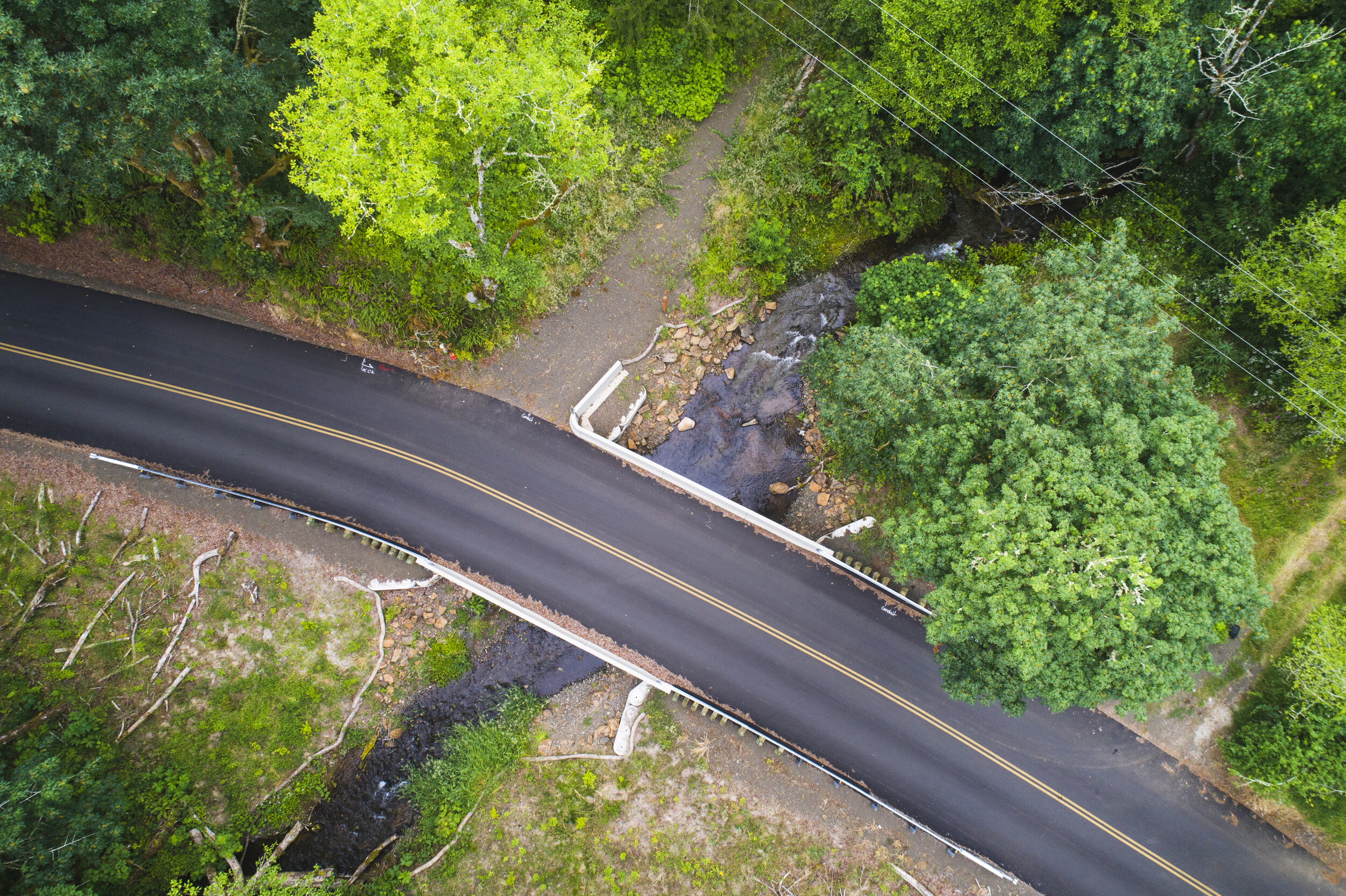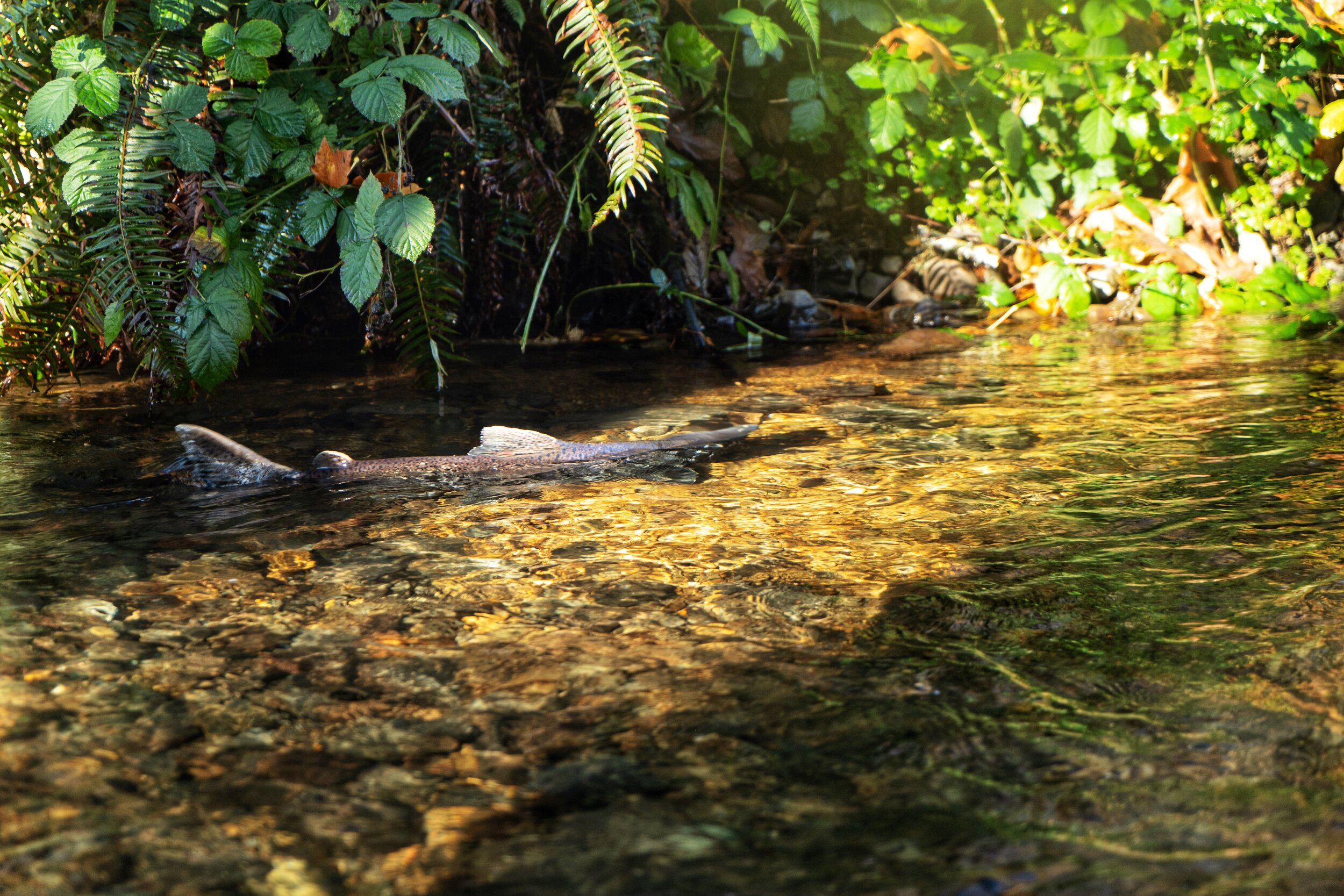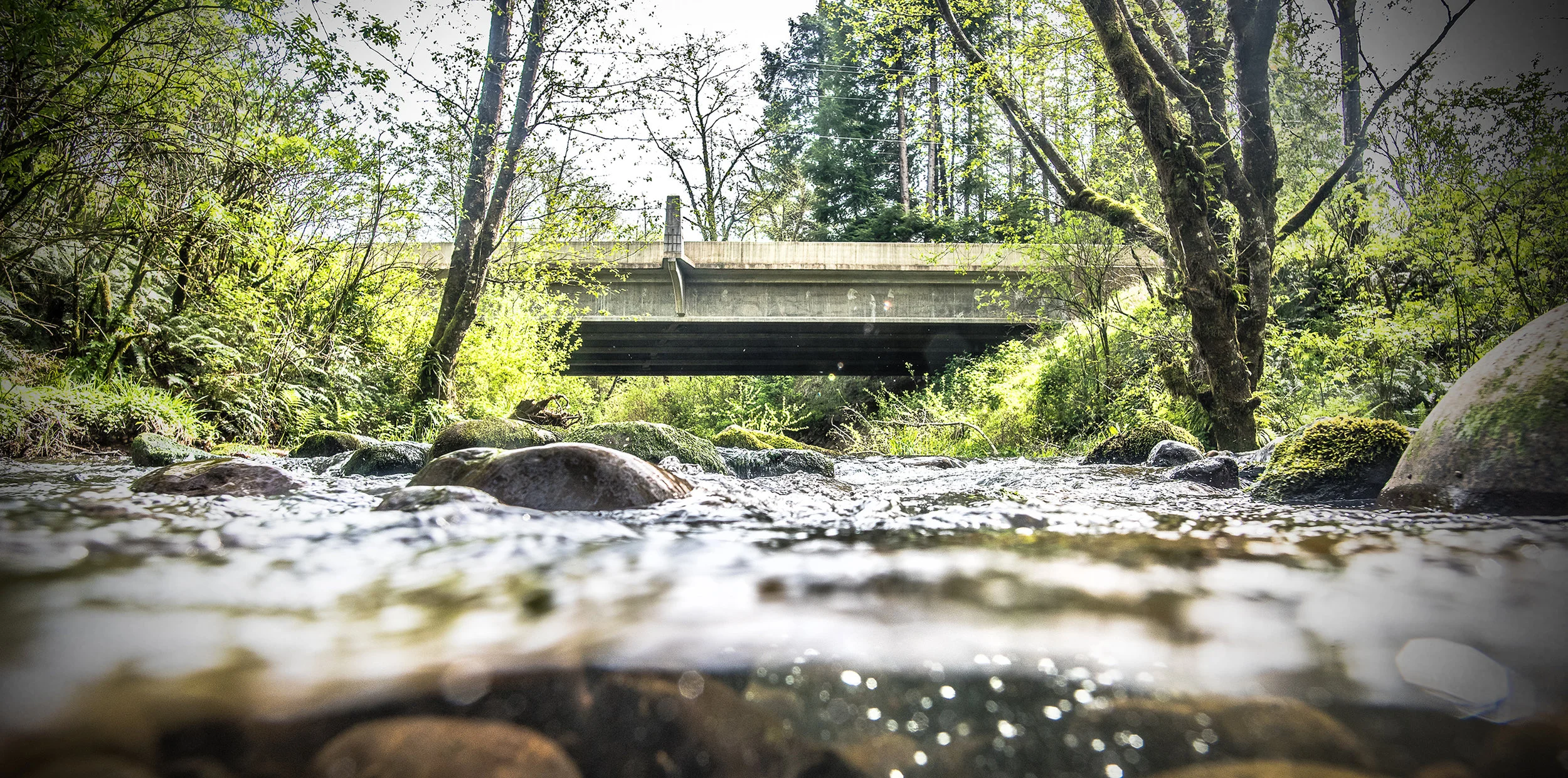Bear Creek highlights
The completed bridge over Bear Creek.
“The Salmon SuperHwy brings otherwise unavailable technical and administrative support
to the county’s most
critical challenges.”
Project oVerview
Started: 4/19 Completed: 10/19
The Nestucca River is critical spawning and rearing habitat for multiple ESA-listed stocks of salmon, as well as Coastal Cutthroat Trout and Pacific Lamprey. Bear Creek drains a 1,600 acre watershed and enters East Beaver Creek near its confluence with West Beaver Creek, a tributary of the Nestucca River. From its headwaters on National Forest land, Bear Creek flows through private timber land and privately owned pastures. The project culvert is the only remaining fish passage barrier on Bear Creek. Replacing this failing culvert with a bridge will restore access to three miles of habitat.
This culvert crossing was replaced with a prefabricated modular concrete bridge structure with a 35’-10” clear span (width between abutments measured perpendicular to the stream channel) and a 27’- 4” roadway width.
The streambed was reconstructed using streambed simulation methodology. This technique emulates the stream’s natural bedform, including gravels and boulders, to create optimal fish habitat and passage.
Highly successful Partnership
The success of the Bear Creek project was largely due to the collaborative nature of Salmon SSH partners involved included federal, state and county agencies, in addition to non-profits and watershed councils. Each of these entities brought a unique perspective and value to the project.
The US Forest Service provided initial site surveys, streambed simulation designs, federal permitting and technical assistance in project implementation, as well as cash contribution. The US Fish and Wildlife Service provided technical assistance, design review and cash contribution. Tillamook County Public Works provided design review, construction management as well as in-kind contribution in the form of construction materials. The Nestucca, Neskowin & Sand Lake Watersheds Council provided project management, state and local permitting and contracting. The Oregon Department of Fish & Wildlife provided technical assistance in project implementation. The Oregon Watershed Enhancement Board and NOAA provided significant cash contribution.
Benefits
• Restored access to three miles of anadromous fish habitat
• Improved sediment and large wood transport
• Provides safe, climate-resilient access for residents and industry using E. Beaver Creek Road
Species + Infrastructure
Lower Bear Creek provides optimum anchor habitat for both steelhead and coho with interactive floodplains, large cobble, significant summer flow volumes, an ideal gradient profile and an abundance of high quality spawning gravel. Chinook salmon, cutthroat trout, and lamprey are also present in Bear Creek.
The project culvert is located on Tillamook County owned East Beaver Creek Road just east of the community of Hemlock, and was the only remaining fish passage barrier on Bear Creek. East Beaver Creek Road provides the only reasonable access to State Hwy 101 for nearly 100 landowners, including a dairy that requires regular milk production pickups and feed deliveries. This road also provides access to a fresh water intake structure maintained by the Nestucca Rural Fire District for use in rangeland fire fighting and is an access road for forestry operations.
Partners
Nestucca Neskowin Sand Lake Watersheds Council • US Forest Service • US Fish and Wildlife Service • Tillamook County Public Works • Oregon Watershed Enhancement Board • OR Dept. of Fish and Wildlife • National Oceanic and Atmospheric Administration
cost + funding
TOTAL COST: $530,268 plus in-kind contributions
USFWS: $40K/$2.5K in kind
ODFW: $1.5K in kind
OWEB: $268.2K
USFS: $80K/$30K in kind
TCPW: $25K/$8K in kind
Columbia Pacific Resource Conservation and Development – Hebo Stewardship Group: $75K
